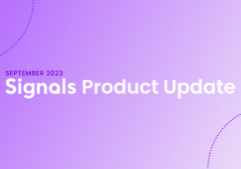We’d all like our bots to work right? After all the effort and thought that goes into designing and creating a good chatbot, we’d like the results to reflect that hard work! If you’re finding that good results are still eluding your chatbots, maybe it’s time to go back to the drawing board and rethink your strategy. While you’re there, here are a few things to consider whether you’re in the process of revamping your bot strategy or just getting started.
1. Test Your Designs
Before you start actually building out a bot in the software, take time to design the logic of your bot. A bot should be direct, conversational, helpful, and engaging. It can be overwhelming to incorporate all those things in one go. Create drafts of your bots somewhere besides the actual bot software. You could use a different planning software like Botmock or Lucid Charts, or even just sketch it out on a piece of paper. Use whatever works best for you to get your ideas down and play around with them before you commit to building it out.
A crucial step in this design phase is testing your design. There are a lot of ways you could do this. With software like Botmock, testing is built right into the process. If you’re using another online tool or going old-fashioned with pencil and paper, test the design by grabbing a coworker and reading the bot out loud. The flow of the bot should be conversational, so have a conversation! Reading the bot design out loud will give you a sense for what sounds natural and what doesn’t. This gives you the chance to make edits right there and then before you construct your bot.
2. Design Based On Data-Driven Use Cases
Choose which bots you build depending on specific use cases. How do you choose those use cases? Look to the data you’ve hopefully accumulated. Which pages on your website receive the most traffic? Which emails have the best click-through rates? What are the things your customers love the most about your products? Use these questions and others to determine what types of bots you’ll build and where you’ll put them on your website. Being intentional about your bots will help you throughout the design and implementation process since you’ll have a clearer view of what you’re doing and why you’re doing it.
Once you have some solid ideas of where you want to start with your bots, take one or two of those ideas and get to work! Be patient with your bot development. If your bot tries to do too much or too little, it can fail. Lean towards starting small so that you can periodically reevaluate your bots’ performance and adjust when necessary.
3. Think outside the box
Chatbots are taking marketing and sales to places they’ve never been before. But this certainly isn’t the end. Chatbots will continue to evolve and you job is to continue evolving with them. For example, voice technology is another space that’s quickly dominating modern-day life. Ask yourself how voice technology might be incorporated into chatbot interactions. How might these two technologies coexist? What would be the different use cases for each? Be deliberately creative with your approach to bots and challenge yourself to ask interesting and difficult questions. In many cases, innovation is the key to survival and success in an increasingly competitive world, so don’t forget to make it a part of your overall bot strategy!
These three strategies will help you take your chatbot design and implementation to the next level. With careful planning, creating, and execution, chatbots can have a major impact on the quantity and quality of your business prospects. Put in the time and you’ll see results.
READ MORE
Start seeing your Buyers' signals
Signals is helping companies automate, grow, and close sales pipeline with industry-leading predictive intent scoring, lead generation, and real-time engagement.


















